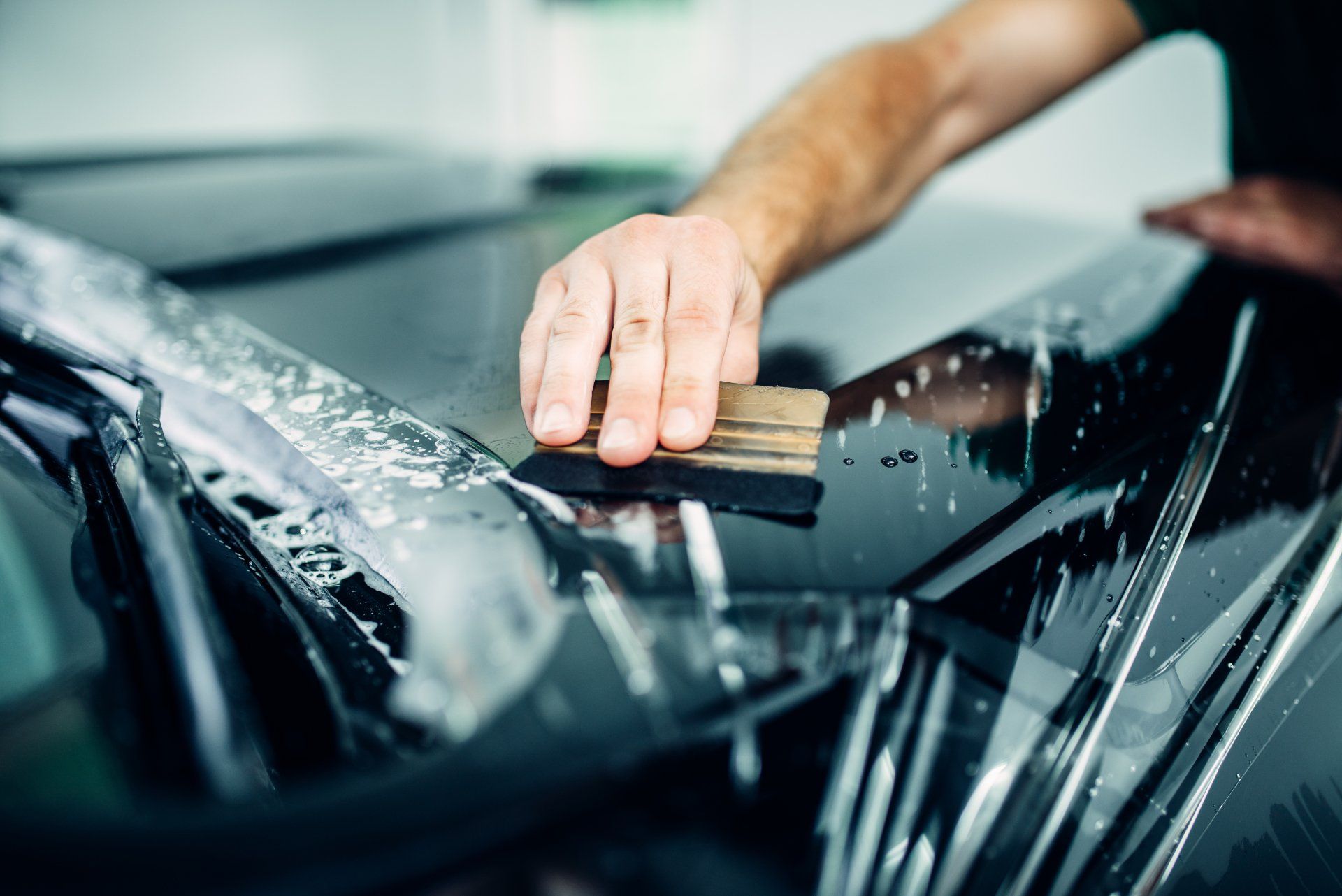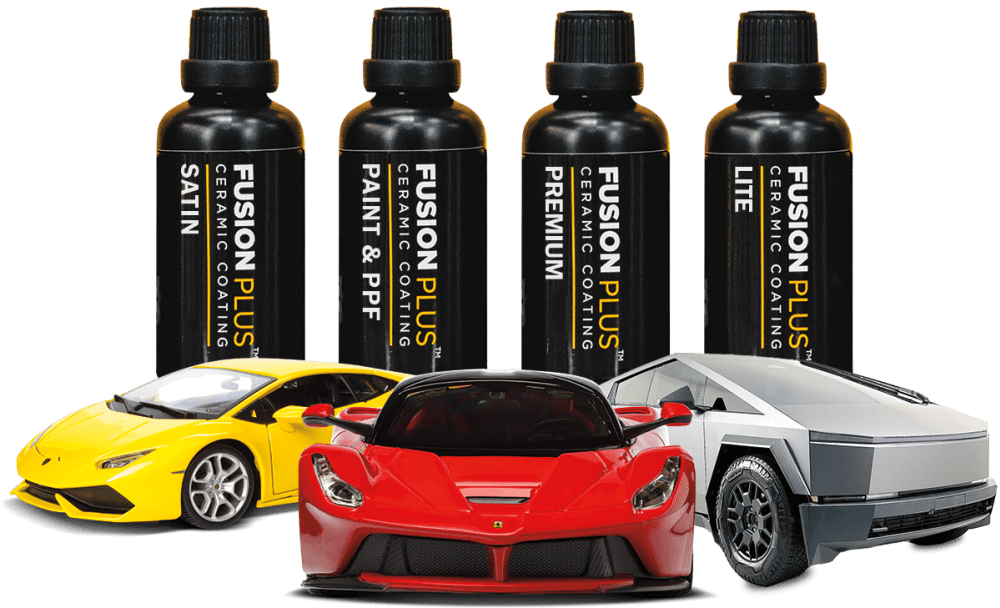Ceramic Coating vs. Typical Wax: Which Provides Better Long-Term Defense?
The discussion in between ceramic coatings and standard wax for lorry protection has amassed substantial interest among vehicle lovers and specialists alike. While both offer the objective of safeguarding paint, their distinctions in resilience, application, and lasting upkeep expenses might affect a consumer's option. Ceramic finishings boast exceptional longevity and resistance to ecological elements, yet the complexity of their application questions regarding accessibility and functionality. As we discover these contrasting options, it becomes important to take into consideration not only the instant advantages but also the implications for lorry treatment over time.
Summary of Ceramic Finishing
Ceramic coating has obtained considerable appeal amongst automotive fanatics and detailers alike as a result of its innovative protective top qualities. This cutting-edge innovation is made to develop a durable, hydrophobic guard over a lorry's paint surface, dramatically boosting its resistance to ecological pollutants such as dirt, UV rays, and chemical stains. Unlike typical wax, which provides a temporary layer of security, ceramic coverings bond at a molecular level with the paint, offering resilient sturdiness-- usually expanding past two years with correct upkeep.
The application process involves precise preparation of the lorry's surface area, consisting of cleaning and polishing to ensure optimum bond. When used, the layer cures to form a robust layer that not just adds depth and gloss to the paint yet likewise streamlines maintenance. With its hydrophobic residential properties, ceramic coating allows water and dirt to glide off more conveniently, decreasing the regularity of washes and decreasing the risk of swirl marks.
Additionally, ceramic finishes are available in numerous formulas, enabling customers to select products customized to their specific needs and preferences. On the whole, ceramic covering stands for a significant development in paint defense technology, providing superior performance compared to traditional choices.
Summary of Typical Wax
Generally related to as a staple in automotive treatment, wax functions as a preferred choice for those looking for an uncomplicated technique to boost and shield their lorry's paint - ceramic coating. Automotive wax typically consists of natural ingredients, such as carnauba, or synthetic substances, created to create a protective layer on the surface of the paint. This layer not just enhances the car's gloss and radiate but also supplies an obstacle versus ecological pollutants
The application of wax is generally straightforward, making it available for both specialists and Do it yourself lovers. Once used, wax needs a healing duration, after which it hardens to develop a safety shell.
Nonetheless, while wax is reliable for improving the visual charm of a vehicle, it is necessary to keep in mind that the security it provides may necessitate more regular reapplication compared to alternate products, such as ceramic finishings. In general, traditional wax remains a popular alternative for those focusing on ease of use and instant visual enhancement.
Sturdiness and Longevity Contrast
While both ceramic coverings and traditional wax offer protective advantages for automotive paint, their resilience and longevity vary significantly. Typical wax, typically made from all-natural carnauba or synthetic polymers, generally supplies a safety layer that lasts around three to 6 months. This fairly short life expectancy demands normal reapplication to maintain ideal defense.
In contrast, ceramic layers are crafted from my sources advanced nanotechnology, creating a covalent bond with the paint surface area. This causes a robust, hydrophobic layer that can withstand for two to 5 years, depending upon the product and environmental problems. The remarkable longevity of ceramic coverings is credited to their chemical framework, which provides boosted resistance to scratches, UV rays, and oxidation.

Defense Versus Environmental Variables
Protecting a vehicle's paint from ecological aspects is crucial for keeping its appearance and worth gradually. Cars are constantly revealed to a variety of aspects, consisting of UV rays, bird droppings, tree sap, acid rainfall, and roadway gunk, every one of which can jeopardize the integrity of the paintwork.
Ceramic finishes offer a robust defense against these environmental assailants. Unlike typical wax, which can break down rapidly under UV direct exposure, ceramic finishings form a durable, hydrophobic layer that resists the hazardous results of sunshine and environmental contaminants. This innovative technology develops a chemical bond with the automobile's surface, providing exceptional defense that lasts for several years, also in rough problems.
In contrast, ceramic finishings maintain their safety high qualities longer, considerably lowering the danger of paint damages and guaranteeing that the automobile preserves its aesthetic allure. As a result, ceramic finishes are significantly acknowledged as the superior selection for long-lasting security against environmental elements.
Application and Upkeep Differences
The approaches of application and succeeding upkeep for ceramic coverings and traditional wax differ significantly, affecting the general individual experience and performance of each item. Ceramic coatings call for an even more complex application process, generally entailing surface preparation that consists of washing, sanitizing, and polishing the vehicle. Once the surface area prepares, the click over here ceramic layer is applied in a controlled setting, frequently needing expert proficiency to make certain correct treating and bonding to the paint.

While both products improve lorry appearance, the longer-lasting defense offered by ceramic layers might validate their preliminary investment, despite the more requiring application procedure. Alternatively, traditional wax stays a preferred selection for those looking for a less complex, albeit temporary, service.

Conclusion
Finally, ceramic layers show considerable benefits over typical wax in regards to longevity and ecological defense. With a life expectancy extending two to 5 years and exceptional resistance to UV rays, dirt, and chemical spots, ceramic layers offer a more reliable service for long-term car maintenance. The application procedure might need expert proficiency, the resulting expense financial savings and decreased frequency of reapplication emphasize the worth of ceramic layers for those looking for ideal car security.
The dispute between ceramic finishings and conventional wax for vehicle security has actually garnered significant attention amongst automobile enthusiasts and professionals alike. Unlike typical wax, which offers a short-term layer of defense, ceramic finishes bond at a molecular degree with the paint, providing lasting sturdiness-- frequently prolonging past 2 years with correct maintenance.
While both ceramic layers and conventional wax deal protective benefits for vehicle paint, their durability and durability vary dramatically. For automobile fanatics seeking lasting security, ceramic finishings provide a compelling benefit over traditional wax products.
In verdict, ceramic layers show significant benefits over traditional wax in terms of longevity and environmental security.